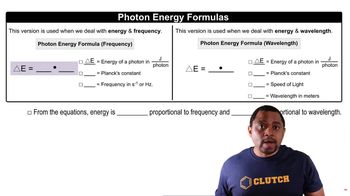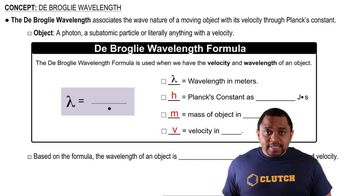Textbook Question
In the Bohr model of atomic structure, electrons are constrained to orbit a nucleus at specific distances, given by the equation where r is the radius of the orbit, Z is the charge on the nucleus, a0 is the Bohr radius and has a value of 5.292 * 10-11 m, and n is a positive integer (n = 1, 2, 3...) like a principal quantum number. Furthermore, Bohr concluded that the energy level E of an electron in a given orbit is where e is the charge on an electron. Derive an equation that will let you calculate the difference ∆E between any two energy levels. What relation does your equation have to the Balmer–Rydberg equation?




